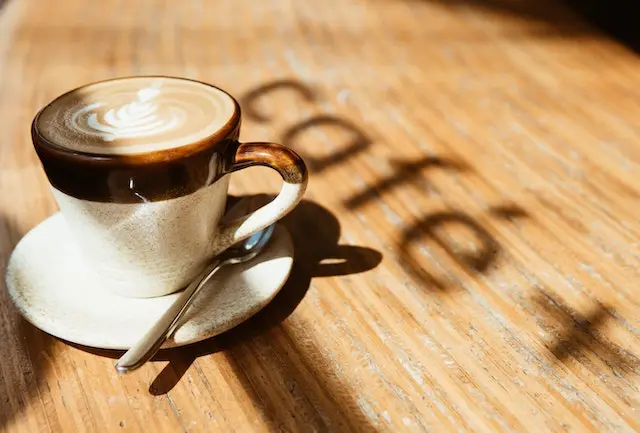Espresso Machine Essentials: What to Look for in Home Espresso Machines
Espresso originated in Italy in the early 20th century and its popularity quickly spread worldwide. The ritual of the perfectly crafted espresso remains a favorite among coffee connoisseurs. This comprehensive guide will cover everything you need to know about espresso machines to help you make café-quality espresso drinks at home.
Espresso Machines Key Takeaways
- Espresso’s Recent History: Espresso is a 20th-century invention that evolved over time, gaining popularity in the United States after World War II.
- The Role of Espresso Machines: These machines are essential for creating high-quality espresso, using high-pressure brewing to extract rich flavors.
- Types of Espresso Machines: There are four main types, each with different levels of automation and characteristics.
- Considerations When Buying: Factors to think about include cost, workflow, kitchen space, ease of use, and maintenance. Research specific brands and models within your budget.

The Rise of Espresso
While coffee has been around for over 1,000 years, espresso is a much more recent invention. The first espresso machine patent dates back to 1884 by Angelo Moriondo of Turin, Italy. However, initial designs were rudimentary and impractical for commercial success.
It was not until 1905 when Luigi Bezzera and Desiderio Pavoni founded the La Pavoni company that the first practical espresso machines emerged. In 1905, their landmark piston-driven espresso machine was successfully demonstrated at the Milan Fair.
After World War II, demand for espresso exploded in America as soldiers returning from Italy brought a taste for the strong, concentrated coffee drink home with them. Specialty espresso bars and coffeehouses started popping up across the United States to meet this new craze.
Today, espresso-based drinks are a multi-billion dollar industry with coffee artisans who painstakingly source beans and develop roasting profiles to get the perfect flavor in each cup. For espresso enthusiasts, sipping a perfectly pulled shot or a creamy cappuccino is an everyday luxury.
The Role of Espresso Machines
Without advanced espresso machine technology, there would be no espresso as we know it. To make high-quality espresso, near-boiling water is forced through very finely ground coffee beans in approx. 25 seconds under at least 9 bars of pressure.
This rapid high-pressure brewing yields the characteristic thick, aromatic crema and bold, complex flavor that is the hallmark of true espresso. The crema in particular is critical, as it emulsifies the natural coffee oils to produce a smooth, luscious mouthfeel.
The first commercially successful machines worked on simple principles – using pistons or steam pressure to drive very hot water through compacted coffee grounds. This breakthrough made it possible to reliably produce the intense extraction required for espresso versus normal drip coffee.
Modern prosumer and commercial machines employ digital PID temperature control, pre-infusion cycles, pressure profiling, and other advances. However, the core function remains the same: deliver hot water under high pressure to extract maximum flavor from the beans.
Home espresso machines aim to bring the technology required to craft high-end drinks like cappuccinos and lattes to the kitchen. With some skill and the right equipment, café-quality espresso can be prepared by anyone.

Types of Espresso Machines
With so many models on the market ranging from under $100 to over $5000, it helps to understand the main design categories of espresso machines. The four main types include:
Manual Espresso Machines
These simplistic machines operate without electricity by using manual force provided by the user. They rely on no electrical components.
Lever Style
The original manual espresso machines dating back over 100 years were lever-operated. The barista fills the boiler chamber with water then loads the portafilter basket with grounds and clamps it into the group head. After the water reaches optimal temperature, the operator pulls down the spring-loaded lever. This forces hot water through the coffee to produce espresso. These iconic machines still have devoted fans but produce inconsistent results.
Piston Style
Piston-driven models employ a lever that drives a ram or piston to generate pressure, delivering superior pressure control compared to manual lever designs. However, the brewing process is still labor intensive and temperature varies.
Semi-Automatic Espresso Machines

These electric pump-driven machines automate some aspects of the brewing process through internal wiring and switches while still requiring some user input. The key components include:
- An electric pump provides consistent 9 bars of pressure
- A thermoblock or boiler heats water to the ideal 200°F temperature
- Buttons control pump operation and steam
- The user still loads the portafilter and activates the brewing
Semi-automatic machines are an affordable starting point for beginners. They improve shot consistency compared to the full manual but the brewing process still requires some effort.
Automatic Espresso Machines
Fully automatic machines control the entire brewing process at the touch of a button while still allowing some customization of shot volume and strength. Convenient features include:
- One-touch brewing operation
- Portafilters with automatic grinding and tamping
- Milk steaming and frothing options
- Ability to save drink recipes
Superautomatic models additionally come equipped with grinders and milk chilling. Automatic machines excel at delivering foolproof results and ease of use.
Super-Automatic Espresso Machines
These fully featured machines aim to replicate a commercial café environment in the home by automating almost every aspect of the process. Benefits include:
- Integrated burr grinder with automatic dosing
- Tamping and leveling ground coffee
- Digital temperature/pressure controls
- User-programmable options and drink recipes
- Automatic milk frothing
The major downside is the very high cost for advanced consumer models, frequently over $2000+. Commercial superautomatic units actually used in cafés cost upwards of $10,000.
Espresso Machine Components and Operation

While design and functionality vary across the different categories, all espresso machines share common core components that work together to produce the extracted beverage:
Boiler
Heats water to the optimal 195-205°F for proper extraction. Common espresso machine boiler configurations include:
- Single Boiler: One boiler for brewing water and steam. Must switch between brewing and steaming. Good for beginners.
- Dual Boiler: Independent boilers for brewing and steam. Allow simultaneous functions. Seen on higher-end machines.
- Heat Exchanger: Uses boiler for both but diverts water directly to the group head. Compromise option.
Pump
Generates pressure. Rotary vane pumps are compact but noisy. Vibratory pumps allow pressure profiling and quieter operation.
Portafilter
Holds tightly packed coffee grounds. Includes handle and interchangeable filter baskets. It is usually paired with a tamper for compressing grounds.
Group Head
Where hot water from the boiler meets the portafilter basket during extraction. Often made of polished brass for temperature stability. Commercial versions allow advanced pre-infusion.
Steam Wand
Injected steam aerates and heats milk for popular drinks like lattes and cappuccinos. Wands may be manual or automatic. Located away from the hot group head.
In addition to these components, high-end pump-driven machines also incorporate technology like:
- PID temperature controllers: Maintains precise temperature
- Gauges: Monitor real-time pressure and temperature
- Flow meters: Track shot volume pulled
Understanding how these systems function helps optimize the brewing process. Now let’s walk through the steps of crafting an espresso shot:
- Whole coffee beans are freshly ground to a fine powder.
- Powdered grounds are compacted into the portafilter basket and then tamped with pressure to form a dense puck.
- The portafilter is locked into the heated group head.
- When brewing is activated, the pump pushes near-boiling water through the puck under pressure, extracting oils and flavor compounds.
- Timing of approx. 25 seconds controlled to achieve full flavor without excessive bitterness.
- To make milk drinks, a steam wand injects steam into milk to increase volume and create a creamy microfoam texture.
- Frothed milk poured into shots pulls flavor from the crema layer.
Factors to Consider When Buying an Espresso Machine
With so many equipment options available for under $100 all the way up to over $5000, choosing the right espresso machine involves identifying your needs and budget. Consider the following factors:
- Cost: How much are you comfortable spending? Entry-level pump machines start around $200-$500. Well-equipped automatic machines run $800-$1500. Prosumer units with advanced features cost $2000+ while commercial grade super-automatic machines can exceed $5000. Set a realistic budget.
- Workflow: Do you want a machine with full automatic operation or one that allows manual control of the process? Super automatic machines require little effort beyond loading beans while manual models involve actively pulling levers and monitoring pressure. Choose your ideal level of control.
- Kitchen Space: Consider available countertop real estate. Compact machines may take up just a few inches while prosumer models require over a foot of clearance. Make sure overhead space allows for removing the portafilter.
- Ease of Use: Beginners often benefit from some level of automation. Super autos are the easiest overall but lack customization. Semi-automatic models are very hands-on. Look for an intuitive interface matched to your skills.
- Maintenance: All require cleaning and maintenance but some are easier than others. Auto frothing wands demand near-daily cleaning. Machines with internal grinding add steps versus using a separate grinder. Understand the care and cleaning your choice requires.
Espresso Machine Brand Comparison

Once you settle on budget, features, and functionality, the selection of specific models and brands becomes paramount. Here is an overview of some of the top-reviewed espresso machine companies across all budget ranges:
| Brand | Class | Price Range | Strengths | Limitations |
| DeLonghi | Entry Level, Mid Range, High End | $100-$3,000 | Affordable, easy to use. Suitable for beginners. | Lower build quality, inconsistent temperature. |
| Breville | Entry Level, Mid Range, High End | $-$300-$3,000 | Reliable, good workflow. Suitable for intermediate users. | Parts may wear over time. |
| Rancilio | Entry Level, Mid Range, High End, Professional | $650-$25,000 | Powerful, commercial grade components. Suitable for advanced users. | Not as user friendly, requires learning curve. |
| La Marzocco | Professional | $5000+ | Ultimate quality and performance. Suitable for professional baristas. | Very expensive, overkill for home use. |
| Jura | Entry Level, Mid Range, High End | $800-$8000+ | Fully automated operation. Suitable for beginners and those who prefer convenience over control. | Expensive repairs, less hands-on control. |
Do your research by reading reviews of specific models within your chosen price range. Watch video reviews that showcase the machines in action. Key considerations include build quality, ease of programming, steam power, reliability, noise level, and of course, quality of the espresso produced. Invest time upfront – your machine will likely be with you for years to come.
Caring for Your Espresso Machine
To keep your investment brewing flawless shots year after year, some basic care and maintenance are required. Follow manufacturer guidelines and consider these general tips:
Daily
- Wipe down surfaces with a damp cloth
- Rinse and dry portafilter after use
- Clean the steam wand immediately after use to prevent buildup
- Empty drip tray and rinse out spent grounds
Weekly
- Change water filter
- Backflush machine with a cleaning solution to prevent mineral scale
- Remove the shower screen and gaskets to inspect and rinse
- Check for leaks, loose screws, or worn parts
- Test thoroughly after any maintenance
As Needed Troubleshooting
No machine runs perfectly forever. Here are some typical problems and potential fixes:
- Sour or bitter taste: Adjust grind, dose, or temperature up or down
- No crema: Stale beans, watery dose, grinding issue, or machine temperature problem
- Leaking water: Inspect fittings, o-rings, tubing and replace worn parts
- Weak espresso: Check pump pressure, adjust grind finer, or descale machine
With preventive maintenance and some periodic troubleshooting, your espresso machine should last for many thousands of delicious drinks.
Tips for Pulling Perfect Espresso Shots

Making café-quality espresso requires care and some trial and error. Follow these brewing tips:
- Beans: Freshness is hugely important. Buy whole beans and grind them right before brewing. Use coffee with nice chocolate and nutty notes. Light roasts allow subtleties to shine.
- Grind: A quality burr grinder is essential for a super fine, powder-like grind. The grind size has a major impact on flavor. Experiment between fine and very fine.
Espresso Grind Size Chart
| Grind Size | Description | Ideal Uses |
| Ultra Fine Powder | Looks like flour, tiny gritty texture | Espresso |
| Fine | Grains feel smooth, powdery | Moka pot, Aeropress |
| Medium-Fine | Grains feel more granular | Drip machine |
| Medium | Noticeable coarser grains | French press, pour-over |
| Medium-Coarse | Visibly coarse and gritty | Cold brew, percolator |
| Coarse | Large gritty particles | French press, cupping |
- Dose and Tamp: Add the desired amount of grounds then evenly distribute and tamp across the portafilter basket with 30-50 lbs of pressure. Consider a leveling tool for consistent tamping.
- Time and Temperature: Aim for a 25-30 second extraction time. Monitor results and adjust the grind to dial in time. Brew water at 200°F for optimal extraction.
- Milk Frothing: Submerge the steam wand in milk to create a silky, swirled texture. Aim for 160°F. Incorporate air for more froth. Pour milk directly into shots.
Vary one component at a time, such as grind or dose, and taste the results. Keep notes on what works to recreate your favorite recipes. Espresso mastery comes with experimentation and experience.
Common Espresso Drink Recipes

One benefit of having an espresso machine at home is experimenting with endless espresso-based drink options:
- Espresso: The pure, concentrated espresso shot. Served solo or in pairs. Intense flavor.
- Americano: Espresso diluted with hot water. Add water to taste preference. Milder profile.
- Cappuccino: 1/3 espresso, 1/3 steamed milk, 1/3 milk foam. Light and comforting.
- Latte: Espresso topped with much more steamed milk resulting in a creamy, mellow drink.
- Mocha: Chocolate-flavored latte. Mix espresso with steamed milk and chocolate sauce or powder. Top with whipped cream.
Try spicing things up with flavored syrups and share your signature creations!
Helpful Espresso Machine Accessories
Accessories are not strictly required but can streamline your workflow:
Coffee Grinder: Burr grinders with precise settings allow grinding beans fresh per shot. Consistent grind size is key for espresso.
Tampers: Aid in evenly compressing grounds. Consider a calibrated model for perfect depth every time.
Milk Frothers: Automate steaming and frothing milk for lattes and cappuccinos. Stovetop steamers are also available.
Knock Box: Barista accessory to cleanly dispose of spent grounds when cleaning portafilter. Prevents drain clogs.
Conclusion
At their core, espresso machines use pressure and heated water to extract intensely flavored concentrated coffee. Understanding the internal components helps demystify how these machines function.
Choosing equipment involves balancing cost, ease of use, automation level, and maintenance needs. With some practice, you can learn to craft café-quality espresso drinks at home.
Making high-quality espresso is both art and science. You must master techniques for grinding, dosing, tamping, and pulling shots. Use fresh beans and experiment to refine your methods.
Owning an espresso machine allows you to enjoy your favorite drinks anytime. Savor every sip and share the experience with others. The bonds built over coffee are as enriching as the beverage itself.
Espresso Machines FAQs
An espresso machine uses pressure (typically 9 bars) to force hot water through finely-ground coffee in order to produce a concentrated espresso shot. Regular drip coffee makers operate at gravity’s pressure and use coarser grounds to produce regular-strength coffee.
For entry-level home espresso machines, prioritize ease of use, affordability, and semi-automatic operation. Helpful features include a steam wand, a 15-bar pump, a portafilter with pressurized baskets, and simple dial controls. Avoid superautomatic machines which can be prone to breaking.
You need an extremely fine, powder-like grind—like granulated sugar—for espresso machines. This allows the hot water to properly extract oils and flavor from the compacted coffee grounds. Finer grinds create more resistance to the pressurized water.
Submerge the steam wand tip just below the surface of cold milk. Position the tip on the side of the pitcher. Turn on the steam and slowly lower the pitcher to incorporate air and create a microfoam. Froth until the milk reaches 160-170°F. Shut off the steam and swirl the milk before pouring.
Bitter espresso is often caused by over-extraction from water being too hot or coffee grounds too fine. Sour or acidic espresso results from under-extraction due to coarse grinds or low water temperature. Adjust your grind size, dose, and machine temperature to achieve a balanced flavor.
Daily: Rinse/dry the portafilter, clean the steam wand after use, and empty the drip tray. Weekly: Change the water filter, backflush with cleaner, and inspect/replace gaskets. Monthly: Descale by running cleaner through the machine to prevent damaging mineral buildup.








